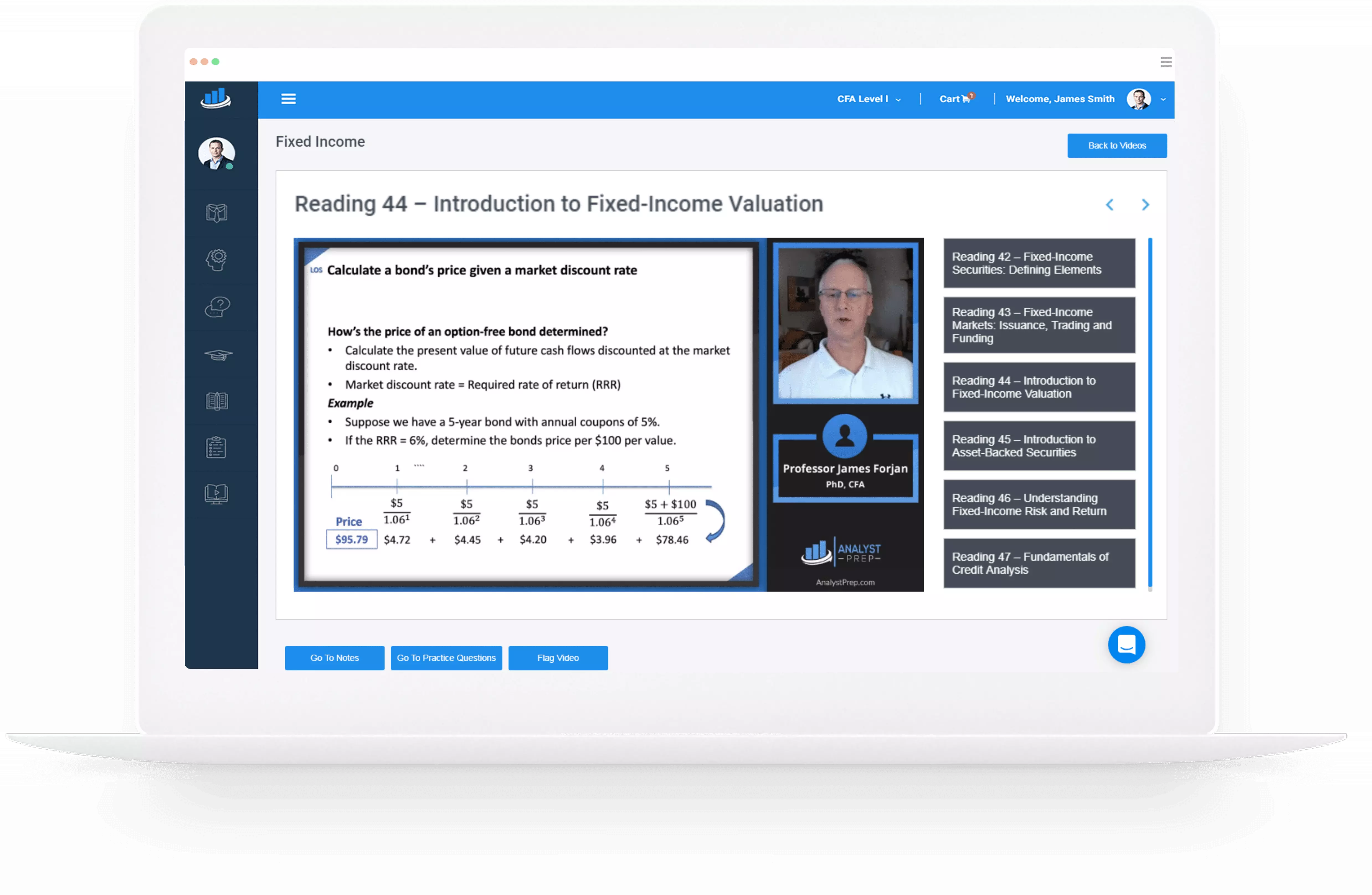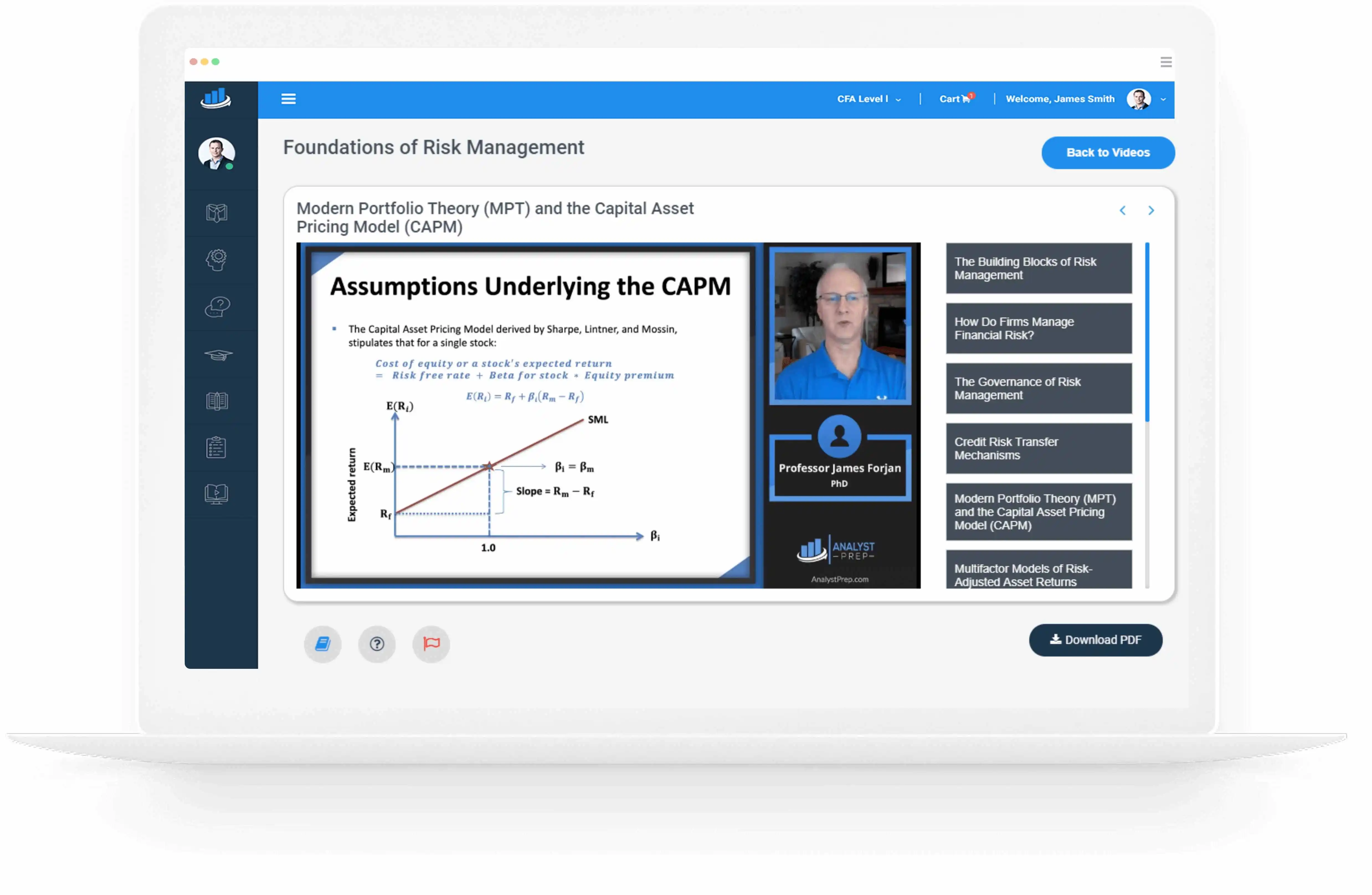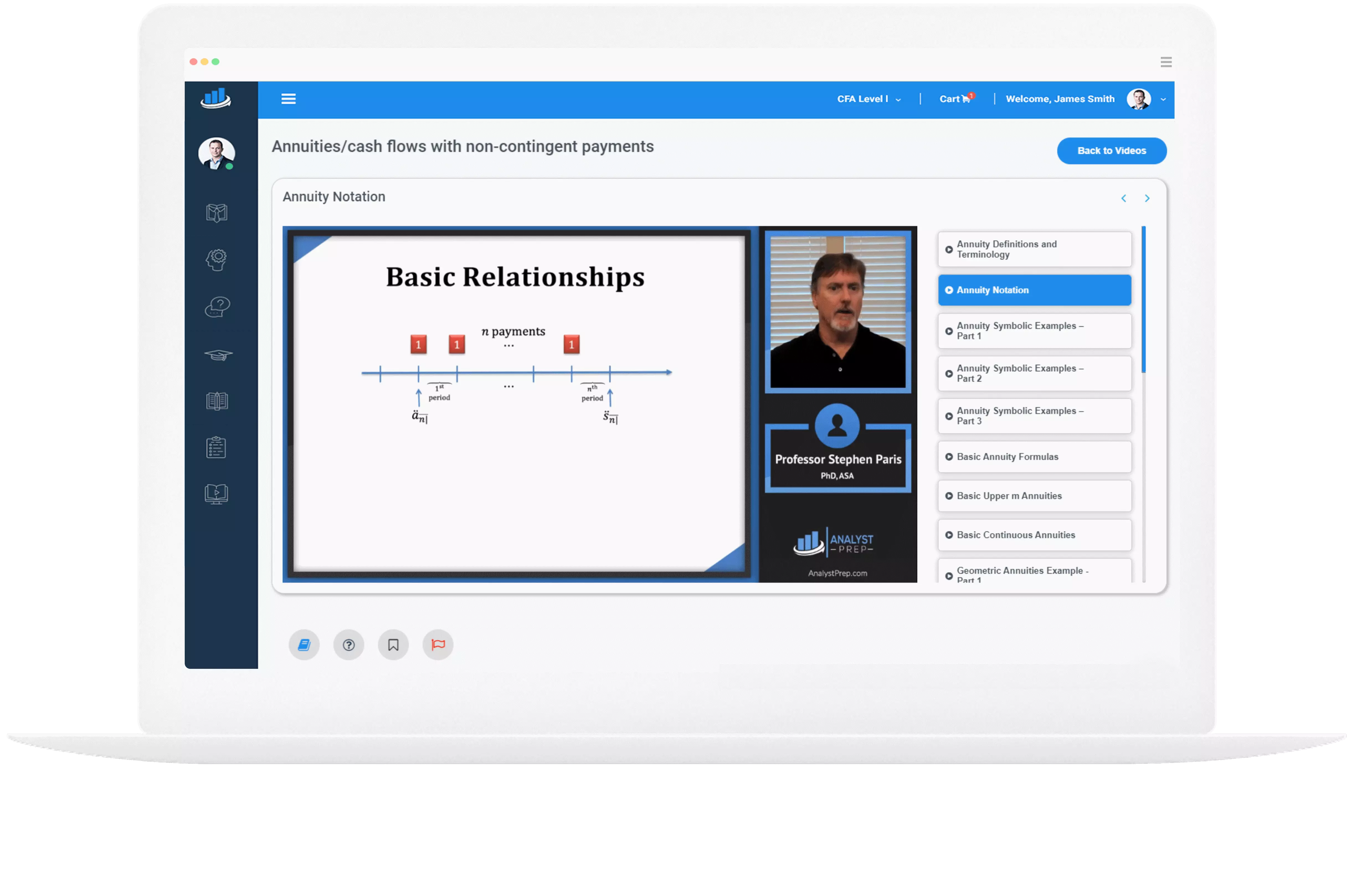Using a Timeline to Model Cash Flows and Solve Time Value of Money Problems
[vsw id=”qk19_k31K-4″ source=”youtube” width=”611″ height=”344″ autoplay=”no”] A timeline is a physical illustration of the amounts and timing of cash flows associated with an investment project. Cash flows that are regular and of equal amounts can be modeled as annuities. In…
The Internal Rate of Return
[vsw id=”lYpi92G13U4″ source=”youtube” width=”611″ height=”344″ autoplay=”no”] The internal rate of return is the discount rate that sets the present value of all cash inflows of a project equal to the present value of all cash outflows of the same project….
Money-weighted vs. Time-weighted Rates of Return
Money-weighted Rate of Return The money-weighted rate of return (MWRR) refers to a portfolio’s internal rate of return. It is the rate of discount, r, at which: $$ \text{PV of cash outflows} = \text{PV of cash inflows} $$ The money-weighted…
Basic Features of a Fixed-income Security
[vsw id=”7zXN8w_K6dQ” source=”youtube” width=”611″ height=”344″ autoplay=”no”] A fixed-income security is a financial obligation that pays a fixed amount of interest—in the form of coupon payments—to investors at specified points in the future. The payments are anchored on contractual guidelines and…
Content of a Bond Indenture
[vsw id=”7zXN8w_K6dQ” source=”youtube” width=”611″ height=”344″ autoplay=”no”] Bond Indenture A bond indenture is a legal document that outlines all the parameters of the bond issue, such as the par amount, issuer, coupon rate, security pledge, and the rights of bondholders. When…
Affirmative and Negative Covenants
[vsw id=”7zXN8w_K6dQ” source=”youtube” width=”611″ height=”344″ autoplay=”no”] Covenants are legally enforceable rules that parties (borrowers and lenders) agree on. The purpose of covenants is to protect bondholders by providing some assurance on what the bond issuer will and won’t do over…
Legal, Regulatory, and Tax Considerations of Fixed-income Securities
[vsw id=”7zXN8w_K6dQ” source=”youtube” width=”611″ height=”344″ autoplay=”no”] Fixed-income securities depend on laws and regulations of the place of issuance, where bonds are traded, and the holders of bonds. National and Foreign Bonds National bonds are issued and traded in a country….
Cash Flows of Fixed-income Securities
[vsw id=”7zXN8w_K6dQ” source=”youtube” width=”611″ height=”344″ autoplay=”no”] Plain Vanilla or Bullet Bonds The most common payment structure is a plain vanilla bond with periodic, fixed coupon payments and a lump-sum payment of principal at maturity. Plain vanilla bonds are very common…
Describe Different Types of Bonds
[vsw id=”7zXN8w_K6dQ” source=”youtube” width=”611″ height=”344″ autoplay=”no”] Call Provisions A call provision gives the issuer the option to repurchase the bonds before maturity. The issuer repurchases the bonds at the market price, at par, or at a specified sinking fund price,…
Contingency Provisions
[vsw id=”7zXN8w_K6dQ” source=”youtube” width=”611″ height=”344″ autoplay=”no”] Contingency provisions allow for some conditional actions. They grant the issuer and/or the bondholder rights but no obligations to exercise specified actions. Types of bonds with embedded options are callable, putable, and convertible bonds….




